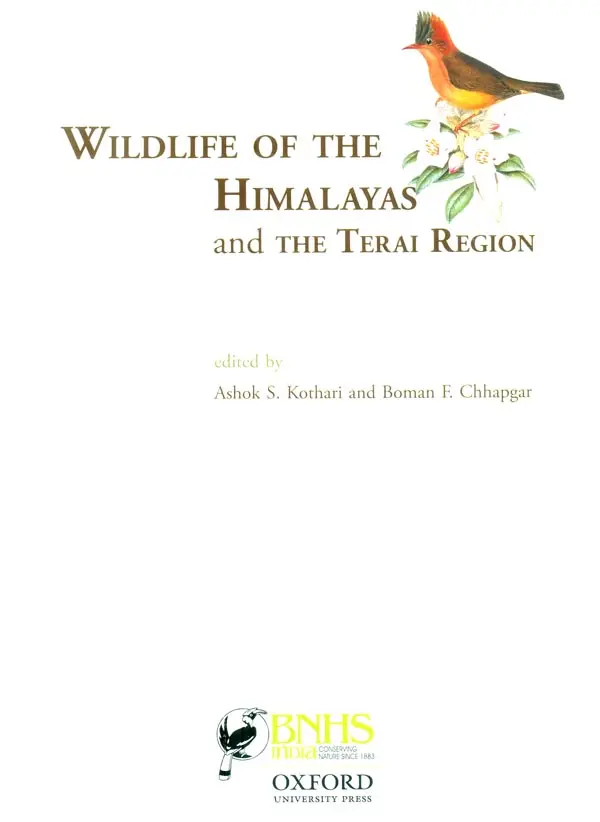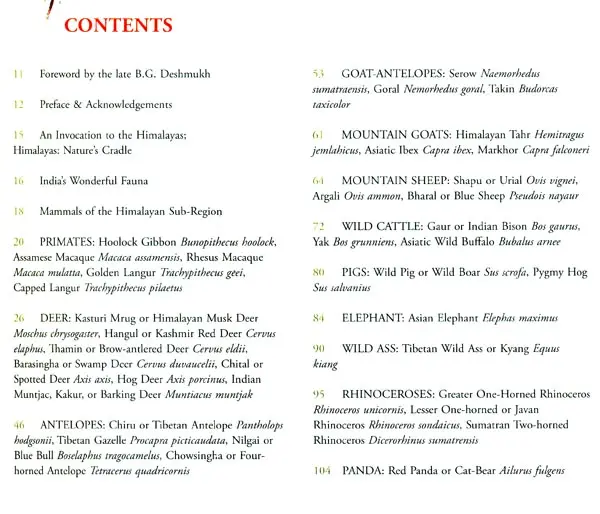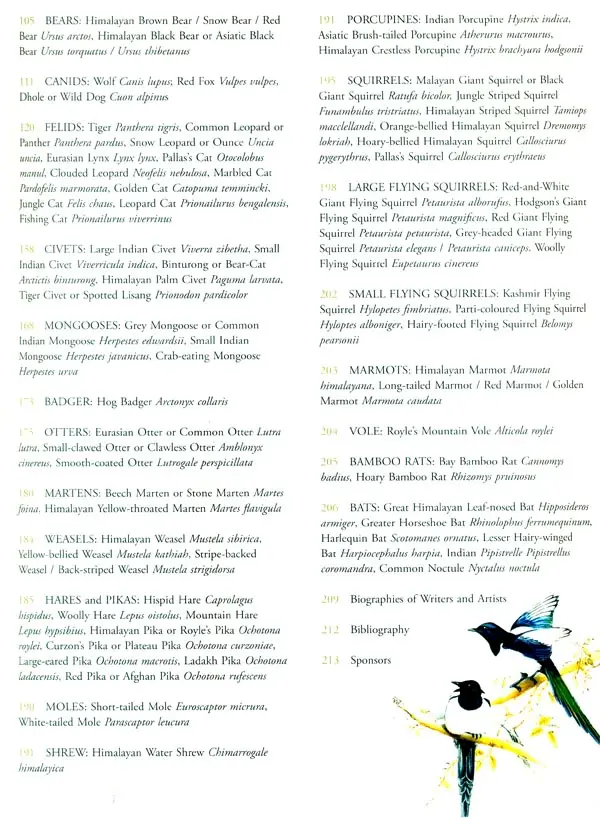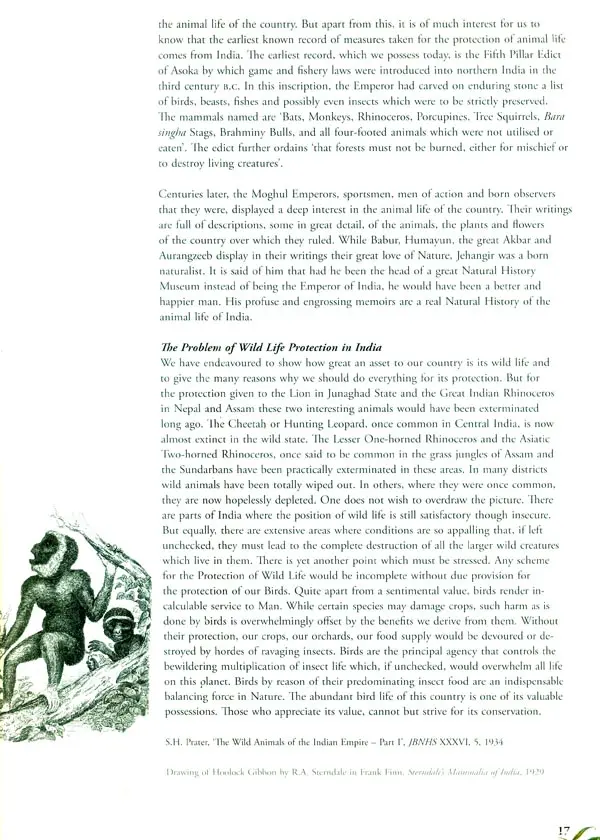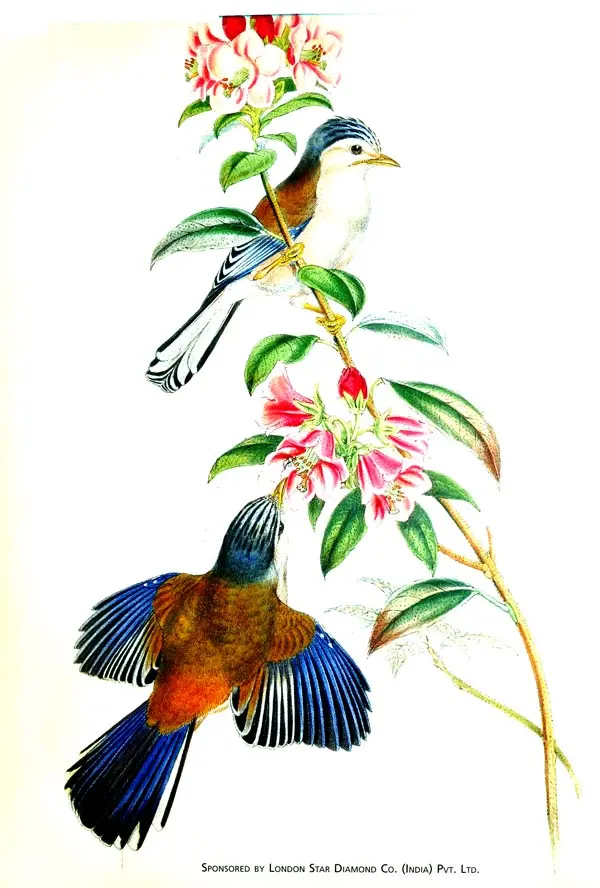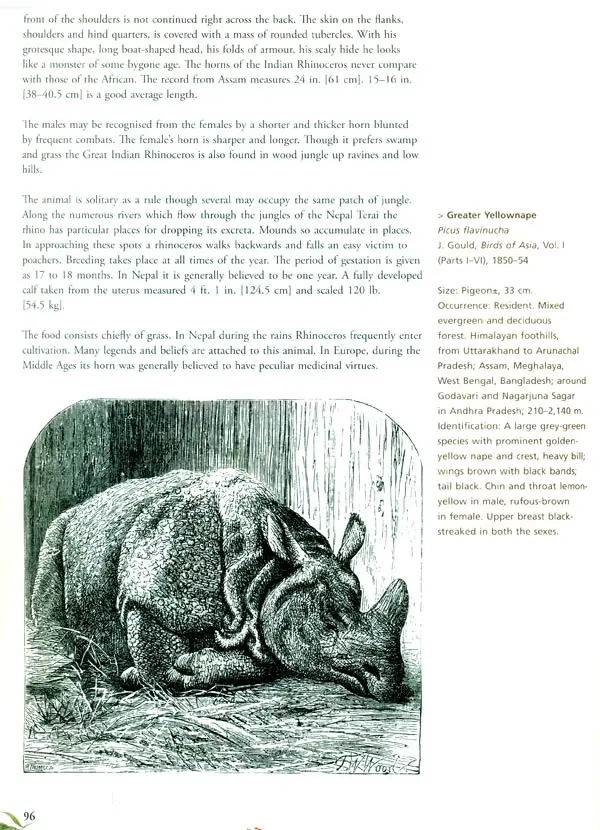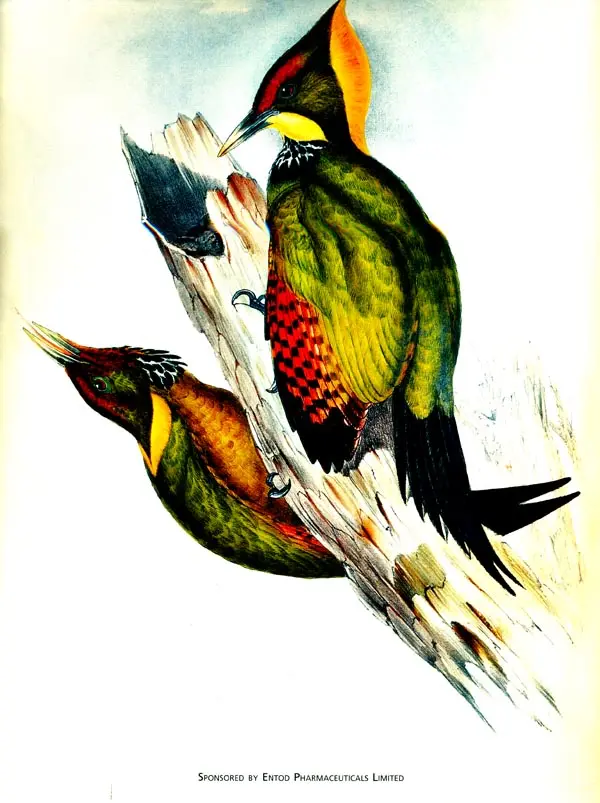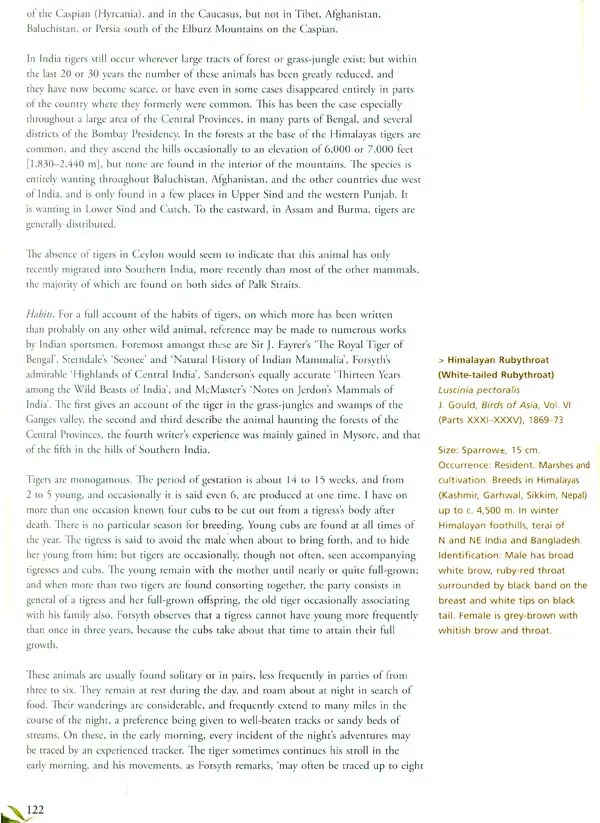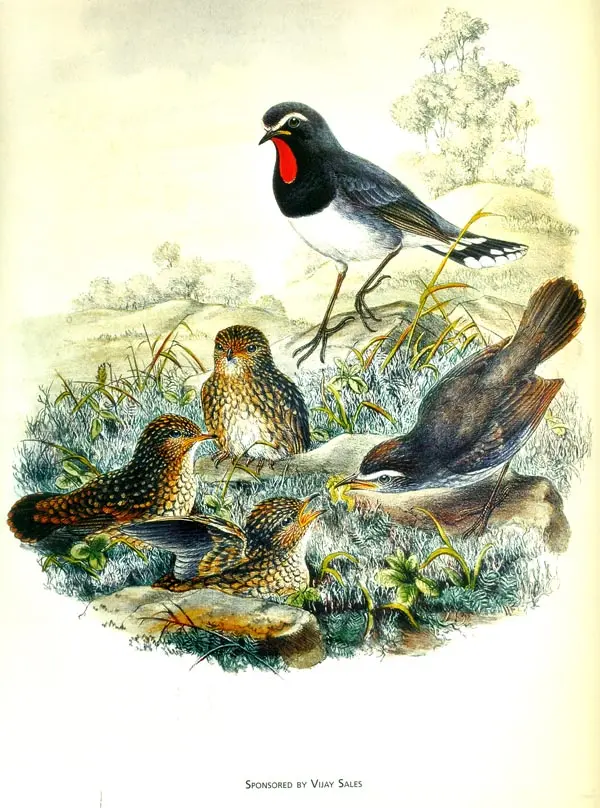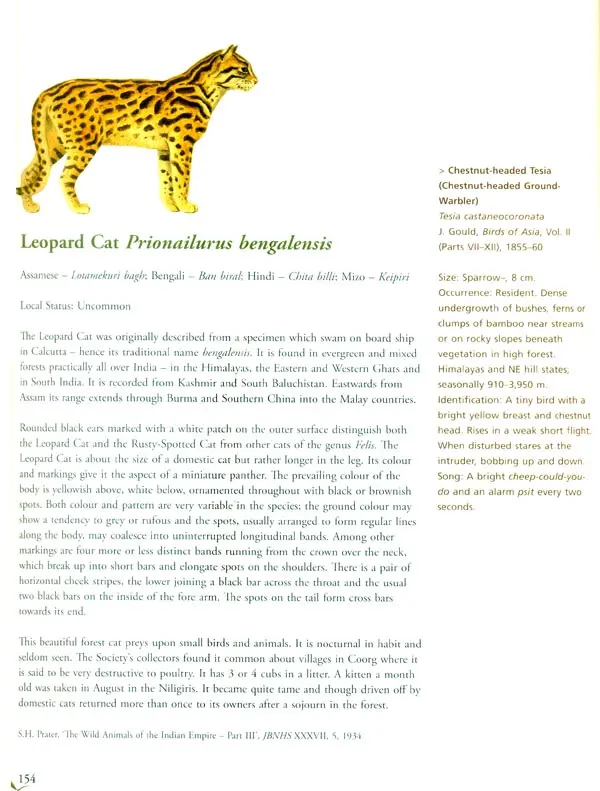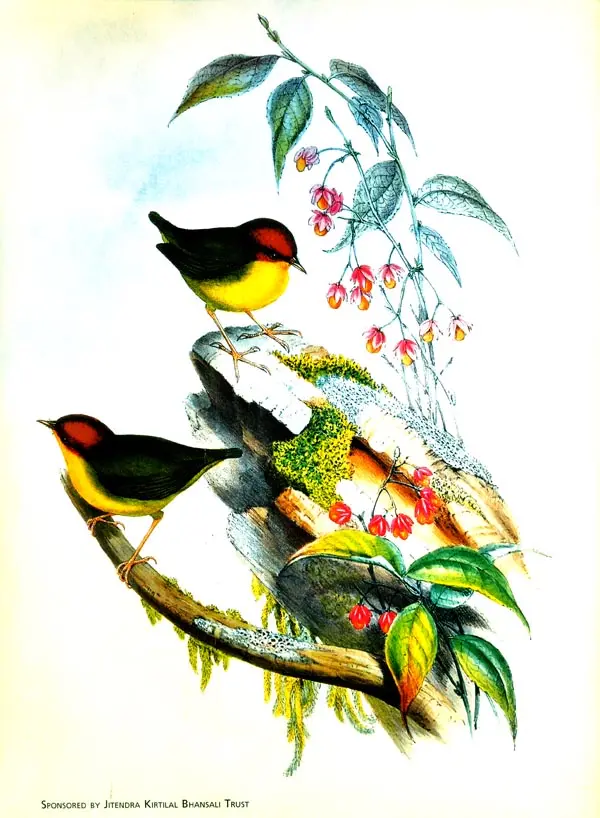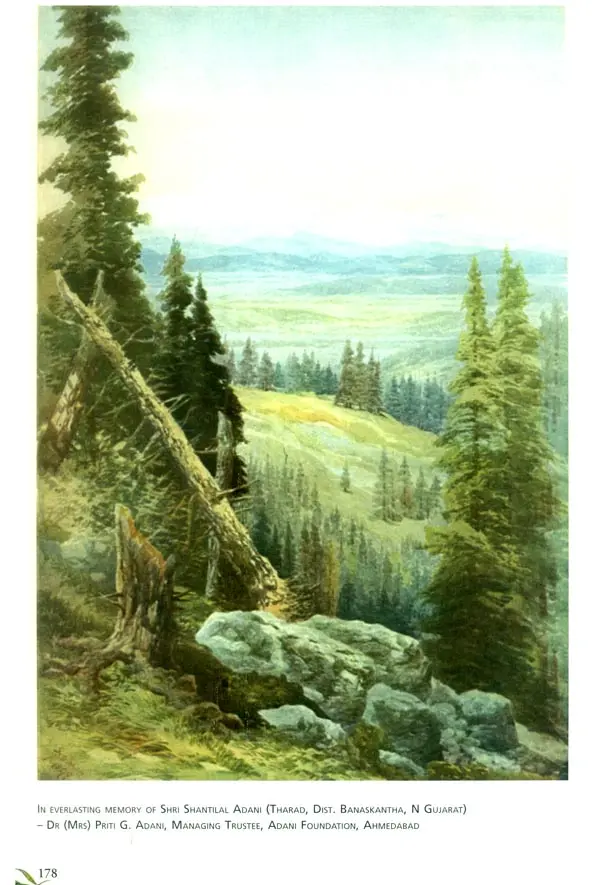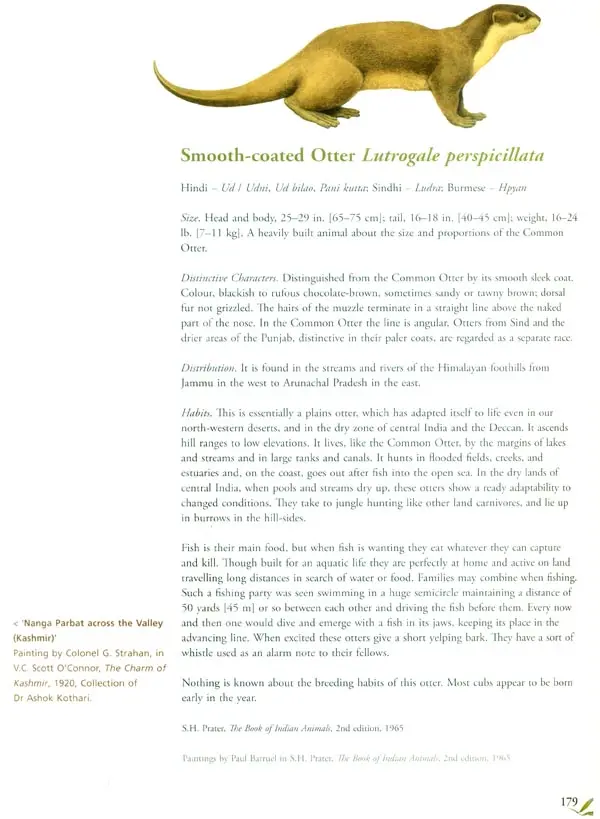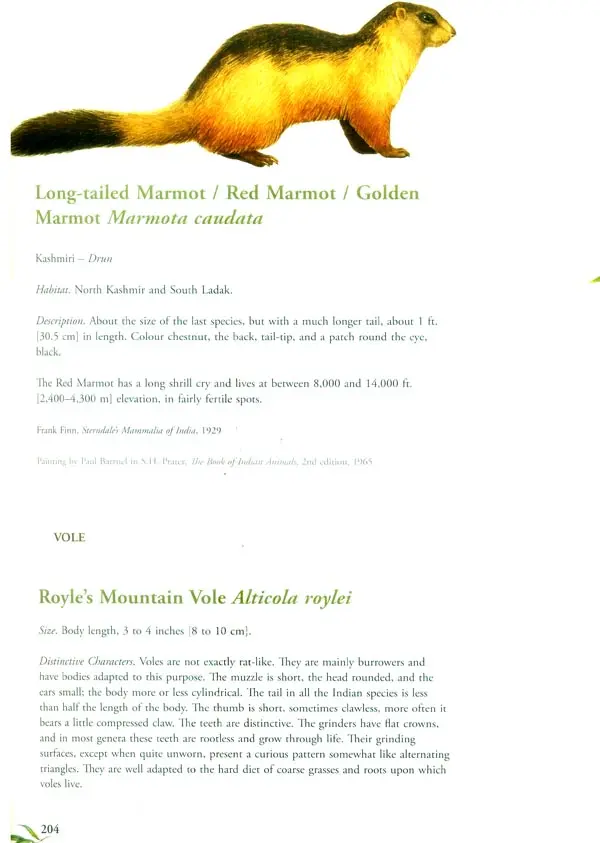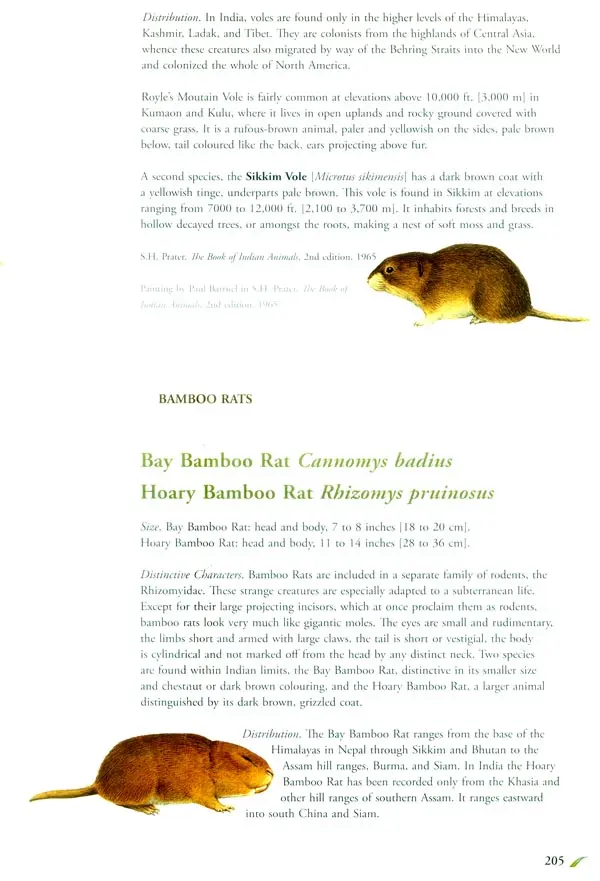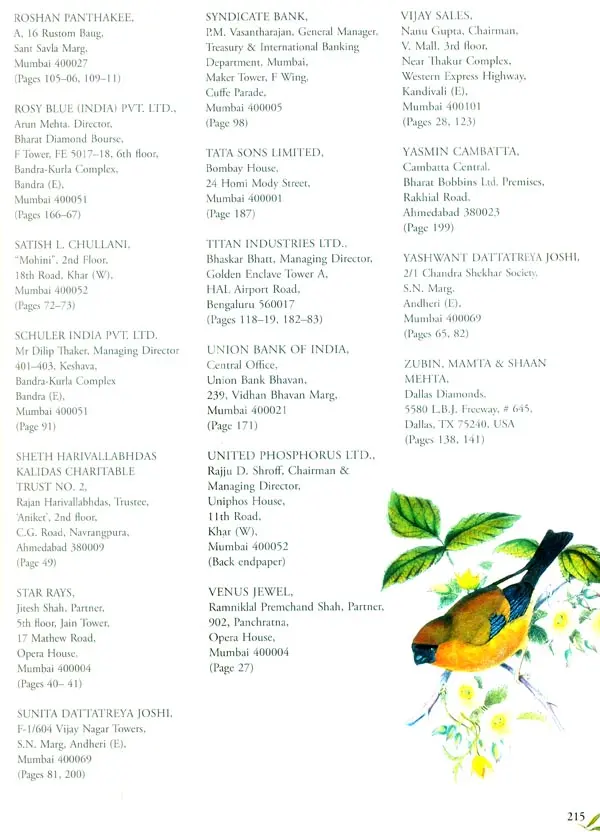
Wildlife of the Himalayas and the Terai Region
Book Specification
| Item Code: | UAF126 |
| Author: | Ashok S. Kothari and Boman F. Chhapgar |
| Publisher: | Oxford University Press, New Delhi |
| Language: | English |
| Edition: | 2012 |
| ISBN: | 9780198083955 |
| Pages: | 216 (Throughout Color Illustrations) |
| Cover: | HARDCOVER |
| Other Details | 13.00 X 10.00 inch |
| Weight | 1.57 kg |
Book Description
This book is the fourth in the Bombay Natural History Society's popular series that aims at making accessible old writings, drawings and paintings of India's rich flora and fauna. However, unlike the earlier books (Salim Ali’s India, Treasures of Indian Wildlife and Living Jewels from the Indian Jungle) which had articles on assorted subjects, here the focus of the text is on the mammals of the Himalayan region, drawing largely on the pioneering work of S.H. Prater and R.A. Stern dale. The superb paintings of Paul Barrel and O.E Tassart specially made for Prater's work (the originals of which are in the BNHS Library archives) complement the text, along with black-and white drawings but other artists. Most of the full-page plates illustrate Himalayan birds (taken from John Gould's Birds of Asia and works by E.C. Stuart Baker and C.M. Ingles), along with some Himalayan landscapes by Major Edward Moline and' Colonel George Strahan, and botanical paintings of Himalayan flowers by J. Forbes Royal.
Boman Framji Ghhapgar, aged 81 and a renowned thalassographer, was curator of the Taraporevala Aquarium from 1959 to 1965 and Research Officer-in-Charge of the Taraporevala Maître Biological Station in 1973. He participated in the International Indian Ocean Expedition (1959-64), with cruises on USS Amon Broun and INS Kuma, and on the first cruise of India's oceanographic ship ORV Sagar Kanya in 1983.
He has discovered six new forms of animals previously unknown to science, and his name is listed in Black welder’s 1961 Directory of zoological taxonomists of the world. A prolific writer, he has authored 13 books and over 100 scientific papers and popular articles. He was the only Indian on the editorial boards of two prestigious home aquarium hobby magazines, The Aquarium and Freshwater and Marine Aquarium (both published from the USA). A Research Guide and visiting faculty for Phil in Zoology of the University of Bombay, he served on its Boards of Studies In Zoology and Applied Biology for a decade and on the Board of Governors of Maharashtra Nature Parks Association for three years. He was on the Executive Committee of the Bombay Natural History Society from 1988 to 2004. He is a Life Fellow of the International Oceanographic Foundation, Miami, USA. His portrait hangs in the Gallery of Carcinologisrs, in the Smithsonian Institution's National Museum of Natural History, Washington DC - one of (WO Indians thus honored for their work in this field. He has donated blood 109 times.
The Himalayas are a source of inspiration to the poet and the essayist. Many a rishi has gone there to meditate and seek spiritual enlightenment. From a more mundane point of view, it is the haunt of mountaineers, whose sole aim is to scale the highest peaks in the world. Our colonial rulers took to the 'hill-stations' on the lower reaches of the Himalayas to escape the scorching summer heat of the plains. Today, with the currently raging discussions on climate change, global warming and the resultant melting of its glaciers, the Himalayas have once again come into the limelight.
Even in the 21st century, the possibility of existence of the 'Yeti', also called the abominable snowman, is still in doubt. From fleeting glimpses of what they thought was the Yeti during blizzards and snowstorms, explorers and naturalists have debated whether iris an ape or a bear, or a wild man. The scalp of a Yeti is said to be preserved in one of our Buddhist monasteries. It would be worthwhile to take a hair sample to analyze its DNA content and end the debate once and for all.
Because of the harsh inclement weather of the Himalayas, one might think that its wildlife would be neglected. Contrary to expectations, however, it has been adequately studied, so much so that there are several books restricted to the flora and fauna of the Himalayas.
Dr Ashok S. Kothari and Dr Boman F. Chhapgar, editors of the Society's earlier books (Salim Ali's India, Treasures of Indian Wildlife and Living Jewels from the Indian Jungle), have, in their fourth book together, focused its pictorial contents as well as its text on the Himalayan region, which is very welcome.
Seeing the close fit, as in a jigsaw puzzle, between the east coast of South America and the west coast of Africa, Alfred Wegener postulated his theory of plate tectonics. According to this, the continents sit atop plates that form the thin solid crust of the earth. These plates float over the hot, viscous, fluid outer core of the earth, like ice in a pail of water. Due to convection currents, these plates also drift, albeit very slowly, in different directions.
Many million years ago the Earth had only two supercontinents - a northern Laurasia and a southern Gondwanaland - separated by the Tethys Sea. Because of internal stress, a piece of land broke off from the left side of Laurasia and drifted away to become North America. Gondwanaland suffered many more stresses and fractures. First, a mass of land broke off from its left side and drifted west to form South America. Another big chunk of land broke off and drifted south as Antarctica. Australia, in turn, broke off from Antarctica and drifted northwards. Finally, what we now call India broke off from the remnant of Gondwanaland (present-day Africa) and drifted in a northeasterly arc to collide against Tibet, which was then the south coast of Asia? That these now distant lands were once contiguous is evident from the occurrence of similar Cichlid fishes in South America, Africa and India. The force of collision between the southern shore of Tibet and the then northern shore of India pushed a long stretch of rock upward to form the Himalayas. This is why we find fissile-shells in the Himalayas. The Tethys Sea started retreating westward to become the Mediterranean Sea. As it retreated, it left behind pockets filled with sea water. These evaporated to form the salt lakes Sambhar, Deedwana and Panchbhadra in Rajasthan.
Many early naturalists were fascinated by the wildlife of the Himalayas (including its foothills and the terai lands). Several species are peculiar to this region, such as the Himalayan Newt, Monal Pheasant, Snow Leopard, Hangul (Kashmir Red Deer), Red Panda, Chiru (Tibetan Antelope) and Himalayan Tahr. Some naturalists restricted their study to the flora and fauna of this region. To cite just a few examples, we have Elizabeth Gould's Century of Birds from the Himalaya Mountains (1832), Illustrations of the Botany and other Branches of the Natural History of the Himalayan Mountains and of the Flora of Cashmere by J. Forbes Royal (1839), Illustrations of Himalayan Plants by J.D. Hooker (1855) and Plantae Asiatic Warriors by Nathaniel Wallach (1832).
Unlike our earlier books (Salim Ali's India, Treasures of Indian Wildlife and Living Jewels from the Indian Jungle) which covered the Indian subcontinent, we have confined our material in this book to the Himalayan region. We are sure that readers will enjoy both the text and the illustrations, and that these will whet their appetite for further knowledge of this spectacular and unique region.
We were helped and encouraged by many while working on this book. Unfortunately, Mr B.G.Deshmukh, Mr I.C. Daniel and Mr Raj Shekhar Parikh who encouraged and guided us are today no more with us. Mr B.G. Deshmukh was president of the BNHS until his death on 7 August 2011 while Mr J.e. Daniel was closely associated with the Society for almost 50 years until his death on 23 August 2011.
Over the years he served the Society as Curator, Honorary Secretary, and finally, Vice President.
The late Mr Raj Shekhar Parikh not only sponsored plates in the previous books but persuaded many others to support us. President of the US-based organization Share n Care, he died of cancer at an early age. When we started this series of large-format illustrated books in 1995, the late Mr S.P. Godrej, Mrs. Vijaya Deshmukh and Mr Jerry Serrano helped and guided us.
As with the last three books, this time too we were firmly supported by BNHS Director Dr Asad Rahmani, former Vice Presidents Mrs. Pheroza Godrej and Mrs. Dilnavaz Variava, Mr Rishad Naoroji, Mr Firdos Cambatta, Mr Aasheesh Pattie, the Maharaja of Vansda, Lt.-Gen. (Retd.) Baljit Singh, newly elected President of BNHS Mr Homi Khusrokhan, and Honorary Treasurer Mr Eknath Kshirsagar. Our dear friend and Chairman of the Library Subcommittee Mr Rishad Naoroji encouraged us to continue working on this type of book. The library staff toiled hard for nearly two years and was the backbone of this project? We are grateful to Mrs. Nirmala Reddy, Mr Tarendra Singh and Mr Sadanand Shirsat (Sadabhau) of the BNHS library for their sincere help. Mrs. Nirmala Reddy kept the papers and the required information for this book in proper order. Mrs. Shalet Alva looked after the correspondence very efficiently while Administrative Manager Mr M.G. Mathews and Mrs Varsha Chalke and her accounts department helped whenever required. Young Swap nil Mastery of the accounts department was also of great help. His father, Santarem Mastery, had worked for the Society as well, until his retirement. We were helped by Ms Vibhuti Dedhia and her entire publication team, as well as Mr J.P.K. Menon and Mr Y Gopi Naidu. Mr Atul Sathe, the young and efficient PRO of the Society, looked after the publicity and kept the media informed about the book even before its release. Mr Santosh Mhapsekar (Manager, Sales) and Mr Sunil Ghavnalkar and his dispatch section worked in close coordination.
We are financially supported; by individuals, banks and companies. Ms Malini Thadani and Ms Aloka Majumdar of HSBC; Mr Paul Abraham, COO of IndusInd Bank; Mr J.Y Sherry, former chairman of Canara Bank; Mrs Geetha Shetty; and Dr Vikram Mehta, trustee of the Parikh Foundation provided valuable support. We are indebted to several leading diamond merchants for their financial help and acknowledgement. This time we received great support from the city of Ahmadabad. The Pirojsha Godrej Foundation helped us, as in the past. Dr Ajay Kothari, Mr Premal Parikh, Rajal and Hardik Kapadia, Sheetal and Devang'Shah, and Mamta and Zubin Mehta (Dallas) also came to our assistance. Mrs Hansa A. Kothari looked after the precious books with utmost care and helped in many ways for two long years though she was not keeping well during this period. Rtn. Amar Baja], enthusiastic president of the Rotary Club of Bombay Seacoast and Rotarians of the club stood by us and sponsored many plates. We thank Mr Yeshwant Joshi, Mrs Sunita Dattatreya Joshi, Mr Satish Chullani, and Mrs Roshan Panthakee for their valuable support.
As with the last three books, this time also The Marg Foundation's team has worked with utmost sincerity under the able guidance of Ms Radhika Sabavala, it’s ever helpful and farsighted General Manager. Rivka Israel infused new ideas and gave utmost importance to this book despite her other commitments. The total involvement of Naju Hirani, Gautam Jadhav, and other members of the Marg team - Savita Chandiramani, Arnavaz Bhansali, Rahul D'souza, Aparna Sundaresan and Ravindra Shewale - have helped to bring out this book well in time. Their dedicated efforts will be long remembered.
Book's Contents and Sample Pages
